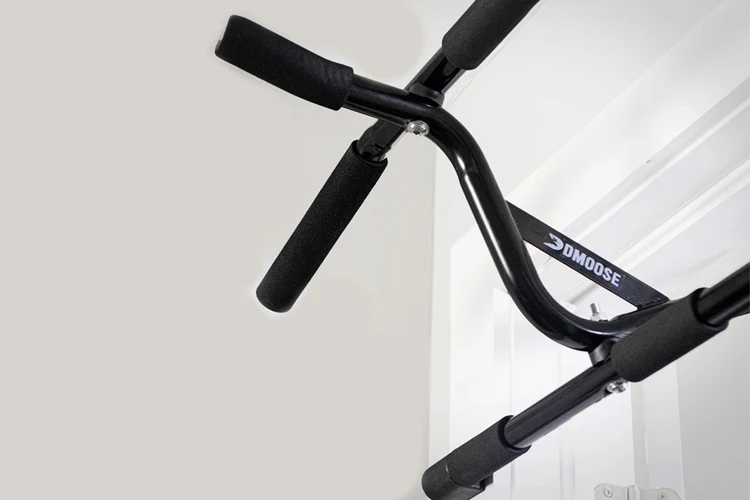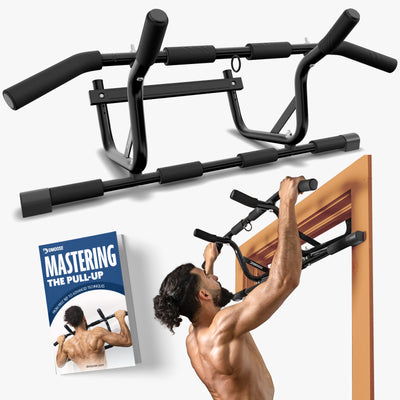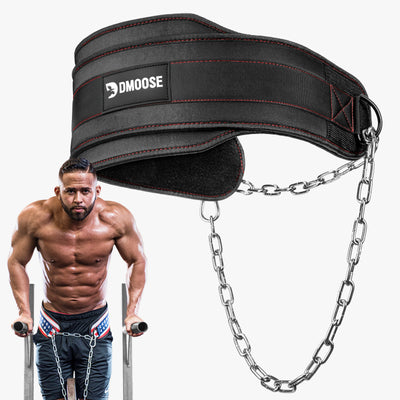Removing a Door Frame Pull Up Bar might seem straightforward, but doing it carelessly can leave unwanted marks or damage on your doorframe.
Knowing how to safely take down your pull-up bar is essential for moving, storing, or rearranging your workout space.
In this guide, you’ll discover easy, practical tips to remove your pull-up bar quickly and without a scratch.
Protect your home’s finish while keeping your equipment in perfect condition because a smart athlete takes care of both their gear and their space. Let’s get started with damage-free removal!
Preparing for Pull-Up Bar Removal

Before you begin removing your doorway pull-up bar, it’s important to prepare properly to ensure a smooth and damage-free process. Start by gathering any necessary tools or materials, although many modern pull-up bars are designed for tool-free removal. Having a soft cloth or towel nearby can help protect surfaces during the process.
Next, carefully inspect both the pull-up bar and the doorway for any existing damage such as scratches, dents, or loose parts. This will help you identify areas that require extra caution during removal.
Finally, clear the surrounding area to provide enough space for safe handling. Remove any nearby furniture or objects that could get in the way or be accidentally damaged. A clean, open space reduces the risk of accidents and makes the removal process easier.
For more information on how to handle your equipment safely, check out our guide on safe practices for using pull-up bars.
How to Remove a Pull-Up Bar for a Doorway: Step-by-Step Removal Instructions

There are three main types of doorway pull-up bars: hook-style, telescopic, and tension-mounted. Each type requires a different removal method. Understanding how your bar works will help you take it down safely without damaging your doorframe. Below, you will find detailed steps for each type to guide you through a smooth and damage-free removal process.
1. Removing Hook-Style Bars
Hook-style bars rely on leverage and hooks that rest over the doorframe, making removal a matter of carefully lifting and disengaging these points. Unlike telescopic or tension bars, you don’t need to adjust length or tension, just release the hooks gently to avoid damage.
- Step 1: Prepare the area: Clear the surrounding space and place a soft cloth or towel nearby to protect the doorframe and bar during removal.
- Step 2: Support the bar firmly: Grasp the bar with both hands to ensure control as you begin the removal process.
- Step 3: Lift the leverage arms: Slowly lift or pull the leverage arms away from the sides of the doorframe, reducing pressure on the contact points.
- Step 4: Disengage the hooks: Carefully lift the bar upward to unhook it from the top door trim, avoiding sudden jerks or twisting motions.
- Step 5: Remove the bar gently: Once disengaged, slide the bar away from the doorway slowly to prevent scratching the frame.

2. Removing Telescopic Bars
Telescopic bars extend by twisting to fit tightly between the doorframe sides. Removal involves reversing this process by retracting the bar, which differs from hook bars as you must adjust its length and handle potential resistance carefully.
- Step 1: Clear the area: Remove any obstacles around the doorframe for safe handling.
- Step 2: Grasp the bar securely: Hold the bar firmly with both hands to maintain control.
- Step 3: Twist to retract: Rotate the bar in the opposite direction of installation to gradually shorten its length without forcing it if resistance is felt.
- Step 4: Release pressure evenly: As the bar shortens, ease it away from the doorframe sides gently.
- Step 5: Remove the bar carefully: Ensure the rubber end caps remain intact and slide the bar clear without scraping the walls or trim.
3. Removing Tension-Mounted Bars
Tension-mounted bars rely on spring pressure or locking mechanisms to stay in place, so removal requires carefully releasing tension to prevent sudden snapping. This differs from hook and telescopic bars, as improper tension release can cause damage or injury.
- Step 1: Prepare the environment: Clear space and keep a firm grip on the bar.
- Step 2: Locate the locking mechanism: Identify any tension locks, clamps, or screws holding the bar in place.
- Step 3: Loosen the tension slowly: Gradually release the locking mechanism or turn any adjustment knobs to reduce spring pressure.
- Step 4: Control the bar’s movement: As tension decreases, hold the bar securely to prevent sudden release or snapping back.
- Step 5: Remove the bar carefully: Once tension is fully released, gently slide or lift the bar out of the doorway without hitting the frame or walls.
Post-Removal Doorframe Care

After removing your pull-up bar, it’s important to carefully inspect the doorframe for any minor scratches, dents, or marks that may have occurred during use or removal. Early detection allows you to address any cosmetic damage before it worsens.
To restore the doorframe’s finish, gently clean the area with a mild soap and water solution, then apply a suitable wood polish or furniture wax to bring back its original shine.
For additional protection in future installations, consider applying adhesive protective pads or foam strips to the doorframe at contact points. These pads act as buffers, minimizing friction and preventing damage when you reinstall your pull-up bar.
Tips to Prevent Damage During Future Installations and Removals
- Follow Proper Installation and Removal Steps: Take your time to avoid forcing or rushing through the process.
- Use Protective Padding: Add foam or rubber padding on contact areas between the bar and doorframe.
- Regularly Inspect Equipment: Check for loose parts, worn grips, or damaged padding and address issues promptly.
- Maintain Tightness: Ensure all locking mechanisms and adjustable parts are secure before each use.
- Avoid Overloading: Stay within the bar’s recommended weight limit to prevent stress on the doorframe.
- Remove Bar When Not in Use: If possible, take the bar down during extended breaks to reduce long-term pressure on the frame.
FAQs
1. Can I remove my pull-up bar without damaging my doorframe?
Yes, by following proper removal steps and using protective padding, you can safely remove your pull-up bar without causing damage.
2. Do I need any tools to remove a doorway pull-up bar?
Most pull-up bars are designed for tool-free removal, especially hook-style and telescopic bars. However, some tension-mounted bars might require a screwdriver or Allen key.
3. How do I prevent scratches when removing the pull-up bar?
Place a soft cloth or protective pad between the bar and doorframe during removal and handle the bar gently to avoid scraping the surface.
4. Is it better to remove the pull-up bar regularly or leave it installed?
If you use the bar daily, it’s fine to keep it installed. However, removing it when not in use for extended periods can help preserve your doorframe.
5. What should I do if the pull-up bar feels stuck during removal?
Avoid forcing it. Check for locking mechanisms or tension settings and release them slowly. Gently wiggle or twist the bar to free it without damage.
6. Can frequent installation and removal damage the doorway?
If done carefully with protective measures, frequent installation and removal should not cause damage. Always inspect the doorframe and bar components regularly.
Conclusion
Removing a doorway pull-up bar carefully is essential to protect both your equipment and your home. By following the correct removal steps based on your bar type, you can avoid scratches, dents, and other damage to your doorframe.
Taking time for proper post-removal care and applying protective measures ensures your doorway remains in great condition for future use.
With these practical tips, you can confidently remove and reinstall your pull-up bar while maintaining the safety and integrity of your workout space.











